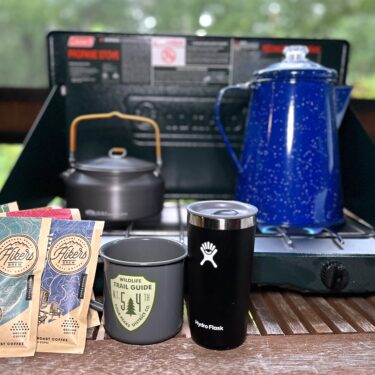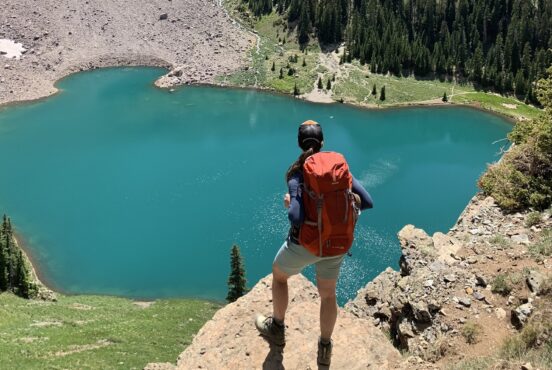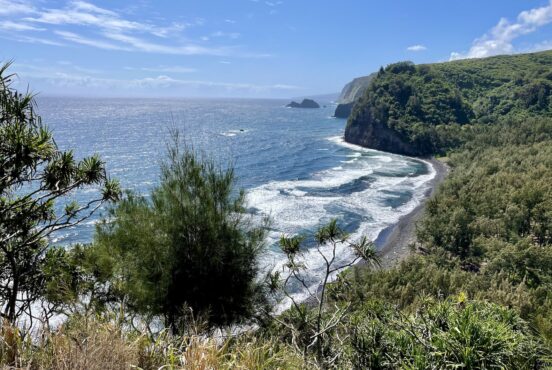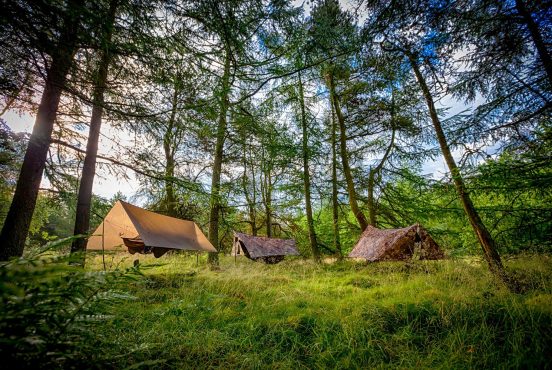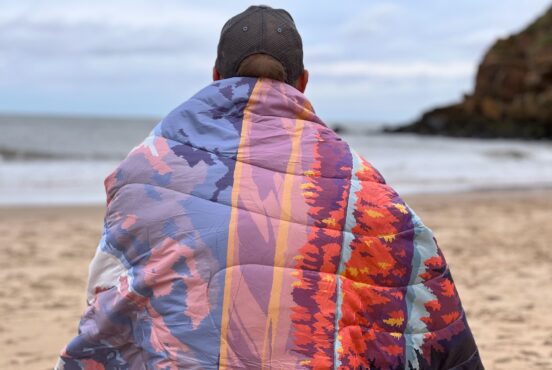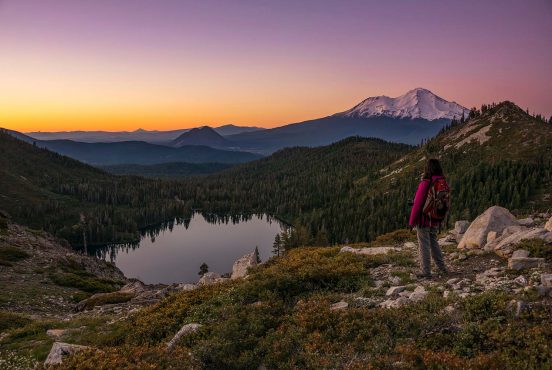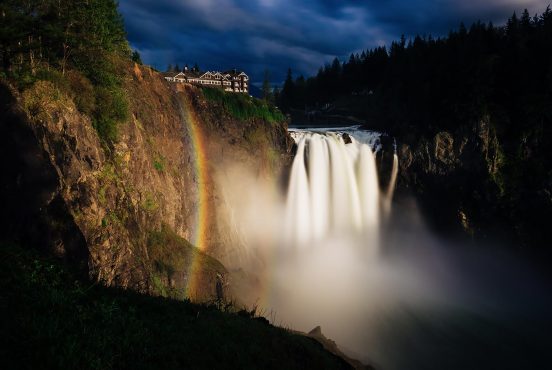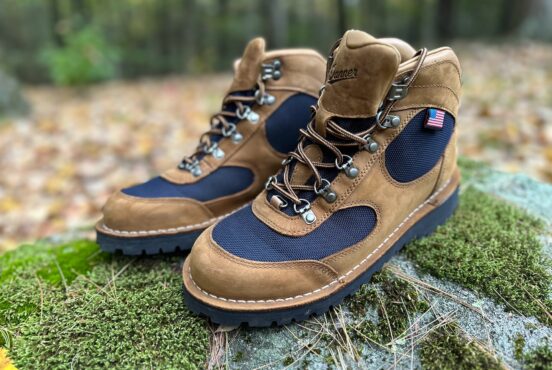Want to truly escape the crowds and land some primo campsites while you’re at it? Try backpacking. This handy guide explains everything you need to get started as a beginner backpacker.
Admittedly,I am a huge backpacking nerd. I’ve overnight hiked on five continents (and day hiked in all seven), thru-hiked legendary paths like John Muir Trail, and stayed up way too late geeking out on gear more times than I can count. Along the way, I’ve gotten up close and personal with every landscape imaginable, from hiking the arid desert canyons of Death Valley to the lush forests of Nepal, the craggy maw of the Grand Canyon, and the high alpine lakes of the Rocky Mountains.
In short, I’ve witnessed the good, the bad, and the ugly (code: blisters and bug bites) when it comes to backpacking.
But wilderness backpacking is so much more than a sport or an excuse to sleep in the dirt. I’ve found that it’s an increasingly essential component of my self care routine. It provides exercise, but also much-needed solace from the right angles and ambulance sirens of city life.
If this sounds like something you’d like to add into your adventure regimen, read on for my top-down guide to getting started as a beginner backpacker.

What is backpacking?
Backpacking is a popular outdoor activity in which you load up all the gear, food, and water that you need and cram it into a backpack. Then, you hike off into the wilderness with said backpack to pitch a tent, cook your meals, and sleep in the wild — far away from your car or any discernible road.
It’s in the name: you’re ‘packing’ with your ‘backpack,’ and it’s one of the most satisfying forms of self-reliance. Most popular national parks and wilderness areas require overnight permits for backpacking to minimize impacts on the land. If this is the case, you may be hiking towards a specifically reserved backcountry campsite to set up for the night.
What’s the difference between day hiking and backpacking?
Day hiking doesn’t involve sleeping anywhere overnight. You begin at the trailhead, enjoy your hike, and return to the car whenever you’re done. Chances are good you’ll spend that evening in your cozy warm bed.
However, backpacking means pitching a tent along the trail and spending the night away from roads and vehicles. As such, you’ll likely be carrying a larger backpack, a tent, kitchen supplies, a sleeping bag, and significantly more gear than you would on a shorter day hike.

How to train for backpacking
Training for backpacking doesn’t have to be a complicated or expensive endeavor, even for weekend warriors who just want to get out for a night or two. You don’t need personal trainers and multiple trips to the gym per week (although they could help!) But, there are certainly a few tips and tricks that helped me when I was just starting out.
First and foremost: do the dang thing. If you live within two hours of a decent trail system, dedicate one day every weekend to getting up and day hiking. If you’re fresh off the couch, start small with a mile out and a mile back. Eventually, the goal would be to work up to day hikes of 8-10 miles.
If that sounds daunting, make it a social event and invite a friend or a partner to catch up for a few uninterrupted hours. As you get stronger and more comfortable on the trail, consider adding more weight to your pack. Pro tip: Gallon water jugs are great for this because you can dump the water at the top of a summit to save your knees on the way down.
Another easy way to add steps to your routine? Go for a one-hour walk around the neighborhood every day after work.
If you’re more of a gym rat or plan to do your training at the height of winter, don’t be afraid to look silly and strap on your pack with two or three-gallon jugs of water in it. Then, head to your local gym and hop on a treadmill or Stairmaster. Yes, it’ll feel weird and you may get some stares, but who cares?
Again, start small but the goal would be to build up to 1-2 hours per session, twice a week. It may sound ridiculous, but I have personally spent dozens of hours listening to podcasts and sweating on a stair machine with a giant pack strapped to my body, and I’ve come out stronger for it.

Backpacking Meal Planning
These days, there’s a veritable grocery store of tasty, pre-made and dehydrated backpacking meals available at the ready. How do we know this? We’ve reviewed a ton of them.
But if you’re feeling overwhelmed, here’s a quick list. I’ve done some of that brutal taste-testing work for you. Here are a few of my all-time favorites to help get you started.
Backpacker’s Pantry Pad Thai
Somehow, this calorie-dense, vegan Pad Thai meal has become my all-time favorite when I’m sweating it out on the trail for days on end. Its crystalized lime juice, peanut butter, and powdered sriracha combine to make it a tasty fireside feast.
Good To-Go Thai Curry
Want something a bit more warming for those chilly camp nights? Every single meal I’ve tried from Good To-Go has been wonderful, but this pescatarian Thai Curry is a true winner. Perhaps the coolest thing about the brand is that every one of its meals are made with ingredients I can actually pronounce.

Heather’s Choice African Peanut Stew
Alaska-based Heather’s Choice is another one of those magical backpacking meal brands that somehow manages to create incredibly tasty dehydrated foods. This African Peanut Stew surprised me with its creamy, savory flavor profile that’s packed with protein.
Good To-Go Herbed Mushroom Risotto
When I tried my first bite of Good To-Go’s mushroom risotto, I couldn’t believe that it was vegan. Yet, somehow this Maine-based brand has managed to create a creamy, filling Italian specialty that easily reheats and rehydrates with two cups of boiling water.
Heather’s Choice Morning Glory Oatmeal
Sure, you could grab some cheap Quaker Oats and call it a day when planning your backpacking breakfasts (lord knows I’ve done it a bunch), but when you really want to treat yourself to something scrumptious as the sun rises and you sip your morning coffee, check out this Morning Glory Oatmeal. It’s jam-packed with pineapple, carrots, and raisins, just like a morning glory muffin.
Kate’s Real Food Dark Chocolate Cherry & Almond Bar
You’ll need more between-meal snacks than you think when you’re huffing and puffing all day with a heavy pack on. All of Kate’s Real Food energy bars are fantastic, but this combo of chocolate and dried cherries has got to be my favorite when I want a sweet, yet nutritious pick-me-up on the trail.
Honey Stinger Waffles
One of the lightest weight, highest calorie (and tastiest) backpacking snacks on the market are these sweet Honey Stinger Waffles. Choose between honey or vanilla flavors and get ready to chow down on the perfect mid-morning snack when you take a water break.

Bobo’s Oat Bars
Dense, filling, and totally tasty, Bobo’s Oat Bars come in a huge variety of flavors and are easy to pack into your hip pockets. To be honest, these babies are so large that I’ll often eat half and save the rest for my next snack break. Though I’m partial to the coconut flavor, my partner prefers the brand’s chocolatey varieties.
Kuju Coffee Single-Serve Pour Over Coffee
Seeking a quality backcountry coffee experience, rather than cheap, dehydrated coffee crystals? Kuju Coffee uses real-deal ground beans in nifty, biodegradable paper pouches that allow trekkers to easily recreate the pour-over experience in the wilderness. Simple tear off the top, pour hot water slowly, and voila! A delectable cup of Joe.
Backpacking gear for beginners
There are four main things to get before you embark on your first backpacking trip:
- A solid tent
- Large backpack
- Sleeping system
- Kitchen setup.
These are the four categories of gear that’ll help keep you safe and comfortable, no matter what the wilderness throws at you.
Sure, the barrier for entry to backpacking might seem alarmingly expensive at first glance, but there are a few used gear Facebook groups, as well as websites like Steep & Cheap, which sell name-brand gear at a sizable discount. REI Co-op also has excellent sales 2-3 times each year (like the REI Anniversary sale), so it’s also worth checking their website and mailers on the regular to save some cash.
In the meantime, here are several of my absolute favorite pieces of budget backpacking gear for beginners who are just starting out.

REI Trailmade Bundle
When you’re a newbie backpacker and you want to get a lot of quality gear quickly, the REI Trailmade Bundle is a screaming deal. For $380, you can nab a two-person tent, a cozy sleeping pad, and a 21-degree synthetic sleeping bag that, together, weigh under 12 pounds. Not too shabby.
Big Agnes Salt Creek SL2 Tent
Ready to upgrade or simply want to invest in a sub-four pound tent right off the bat? (I did at the beginning of my backpacking journey, and I’ve never looked back.) This $350 shelter by Big Agnes is one of the most affordable 2-person ultralight tents on the market, weighing in at just 3 lbs. 11 ounces.
REI Flash 55 Pack
Every time I research and write an article about backpacking, the REI Flash 55 pack floats to the top of the list as the ideal overnight backpack that won’t break the bank. With hip belt pockets, padded shoulder straps, and 55 liters of space to cram your gear, it’s every bit as functional as its pricier competitors. REI designs styles for both men and women.
Osprey Aura AG 65 Backpack
This is the best-selling backpacking pack by industry leader, Osprey. The Aura AG 65 is expensive at $340, but it also offers amazing frame technology that makes for a more comfortable, chafe-free carry. If you know you’re going to be backpacking a lot this season (or pushing loads of big-mile days), it might be worth shelling out the extra dough.

Big Agnes Anthracite 20 Sleeping Bag
Let’s get one thing straight: ounce for ounce, down is the most lightweight, packable, and warmest material for sleeping bag insulation. It’s also very, very expensive. When you’re just starting out, consider an eco-friendly synthetic model to save money — like this 20-degree Anthracite bag by Big Agnes. The bags are designed for both men and women.
NEMO Switchback Sleeping Pad
Though it’s not going to be as comfy as a plush-inflated sleeping pad, a closed-cell foam mat won’t ever spring a leak in the middle of the night. They’re also significantly cheaper than their inflatable counterparts. NEMO’s Switchback Sleeping Pad offers a summer-friendly 2.0 R-value, which is great for mild climates.
Therm-a-rest NeoAir XLite NXT Sleeping Pad
When you’re ready to upgrade to an inflatable pad (or if you simply hate those thin foam mats), I sincerely believe that this blow-up model from Therm-a-rest is worth the splurge. Boasting an R-value of a toasty 4.5, this pad is also fabulously ultralight, with most lengths weighing in at under a pound.
Pocket Rocket 2 Mini Stove Kit
Not only is the Pocket Rocket 2 amazingly lightweight, it’ll also last for years. I bought mine back in 2016, and it’s still going strong. This stove kit includes everything (minus the fuel) to get you efficiently boiling water for your meals and hot drinks on the trail. Another great option, if you don’t mind the extra splurge? Jetboil’s Flash Cooking System.

Sawyer Squeeze Water Filter System
A backpacking water filter is a must. Though it’s a smidge annoying to use, Sawyer’s Squeeze Water Filter has been around forever, is reasonably priced, and will absolutely keep you from getting sick while drinking out of wild streams and lakes.
Potable Aqua Iodine Tablets
Because I’ve had a couple of water filters crap out on me in the wild, I now toss these handy iodine tablets into my pack as a backup to treat my H20. Does the water taste amazing? No. But sometimes, it’s better to be safe than comfortable in the woods.
BearVault BV475 Trek Bear Canister
Traveling through bear country? Chances are, you’ll need a hard-sided canister like this one to protect your food, toiletries, and other smellables from animals while you catch some much-needed Zs at night. Many popular national parks also rent bear canisters for $5 at participating ranger stations. Depending on where you live and the bear regulations, this may be a better value.
Adventure Medical Kits Ultralight .7 Kit
Don’t forget: safety first. Dollar for dollar, this is the best lightweight, waterproof first aid kit I’ve found. It helped me in a pinch when I banged up my knee jumping into a remote lake in Yosemite, and again when I witnessed a bad fall in Sequoia. The fact that it’s only $34 is even sweeter.
Hoka Trail Code GTX
This might technically fall under the category of backpacking apparel, but having appropriate footwear is essential to enjoying your first few backpacking trips, blister-free. I recently picked up a pair of Hoka’s Trail Code GTXs, and they are lightweight, provide adequate ankle support, and best of all, have a phenomenally stable heel to help you stay balanced.
Got wide feet? Altra’s Timp Hiker is cushier than their famous Lone Peak model and boasts stellar ankle protection.
Find Your Next Adventure
Get epic travel ideas delivered to your inbox with Weekend Wanderer, our newsletter inspiring thousands of readers every week.
Seen in: Backpacking, Gear, Hikes

